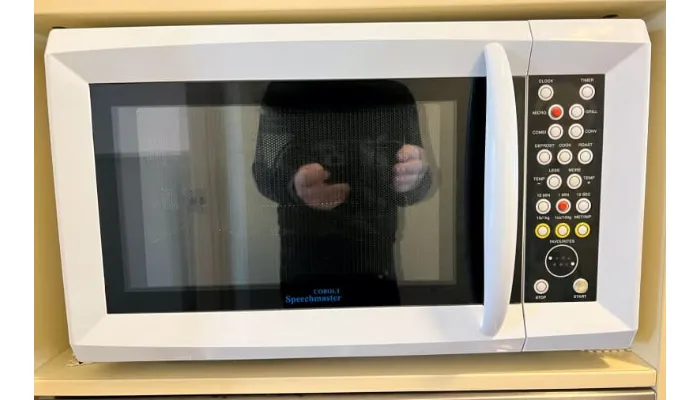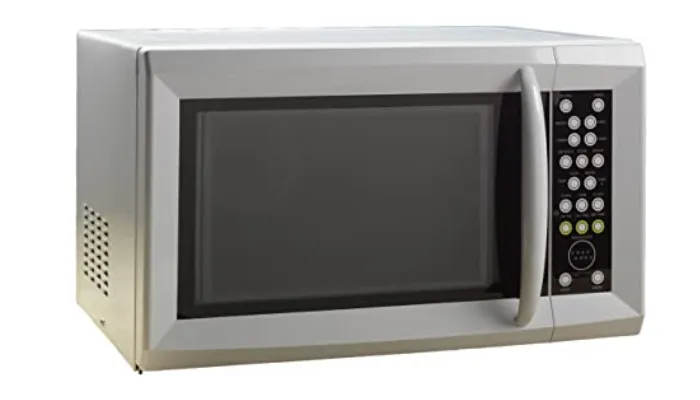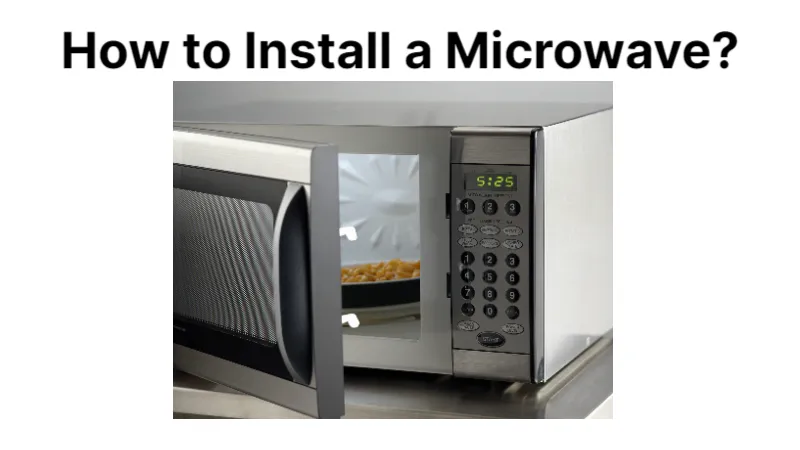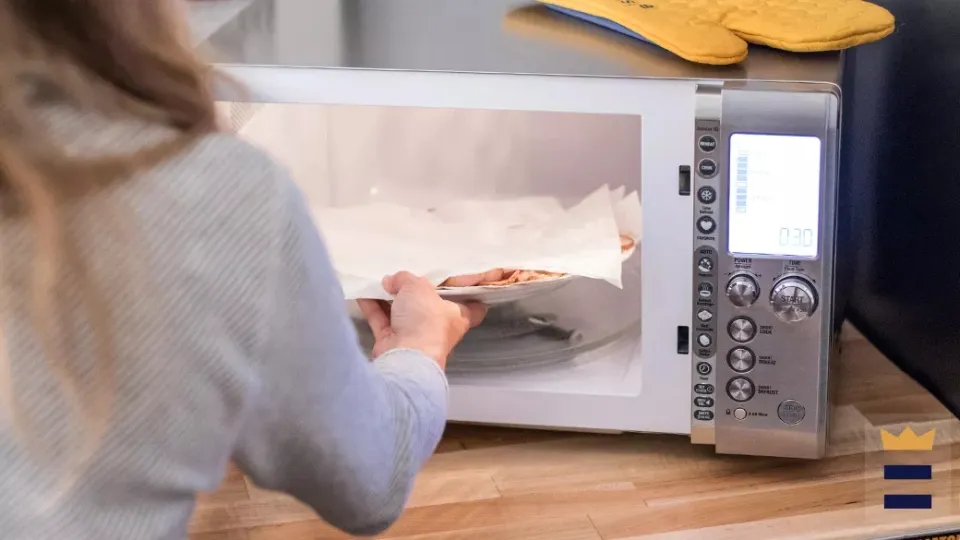If you adhere to the instructions, mounting your microwave under a cabinet or on a shelf can significantly reduce the amount of counter space needed. To begin with, you are supposed to prepare equipment and tools. Below are the quick steps on How to Install a Microwave:
- Find the Studs
- Apply the Paper Template to the Wall
- Drill Pilot Holes
- Apply the Paper Template to the Cabinets and Drill Holes
- Cut Openings for the Vent
- Install the Mounting Bracket
- Position the Microwave Oven
- Attach the Top Mounting Bolts
- Connect the Duct
Please read on for more detailed information.
What You’ll Need
Equipment / Tools
- Tape measure
- Stud finder
- Carpenter’s pencil
- Level
- Jigsaw
- Eye protection
- Phillips screwdriver
- Drill and bits
- Ratchet wrench and sockets
- Tin snips (optional if installing a vent)
Materials
- Masking tape
- Vent collar or other vent fittings (as needed)
- Over-the-range microwave oven
- Metal foil tape
- Sheet metal screws (as needed)
Instructions
Find the Studs
Wall studs, not just wallboard, must be used to anchor the mounting strip that holds the microwave’s back. Find the studs in the area beneath the upper cabinet using a stud finder to start. After that, mark the lines with a pencil on the wall and extend them downward using a level.

Apply the Paper Template to the Wall
Two paper templates should be included with your microwave: one to stick against the back wall and the other to the underside of the upper cabinet. Apply masking tape to the wall and attach the wall template.
Drill Pilot Holes
Find, if possible, at least two stud locations that match the template’s attachment points using the template as a guide. Use a drill bit that is just a little bit smaller in diameter than the mounting bolts or screws to create pilot holes where necessary.
Apply the Paper Template to the Cabinets and Drill Holes
Utilizing masking tape, adhere the second template to the lower cabinet. The locations of the holes to be drilled for venting and power cords are indicated by this template. Use a spade bit to drill these holes where they are marked. Additionally, drill holes where they are indicated for the oven’s mounting bolts.
Cut Openings for the Vent
Your vent’s placement will depend on whether the existing vent exits through the roof or the wall behind the oven in the back. Depending on how the vent and ductwork are arranged, use a jigsaw to cut a hole in the bottom of the upper cabinet or the template for the back wall. After cutting, take the template out of the cabinets.
Tip
Before raising the oven into position, the venting system may require the addition of a vent collar, a transition fitting, or other modifications.
Install the Mounting Bracket
the wall, and take the template down. The metal mounting bracket should be placed and mounted on the back wall. Use the pilot holes you made and adhere to the manufacturer’s instructions. The strip should ideally be fastened to studs. Anchoring it to at least one is crucial. In cases where it is not possible to attach the bracket to at least two studs, the manufacturer may offer instructions for using different wall anchors.
Position the Microwave Oven
Lift the microwave into position with the aid of a helper, feeding the electrical cable up through the upper cabinet’s drilled hole. As you reach around the back and hook the slots on the oven over the tabs on the metal mounting bracket, have your helper support the majority of the weight. While you swiftly proceed to the following step, have your assistant hold the oven against the upper cabinet.

Attach the Top Mounting Bolts
Ideally, self-aligning mounting bolts are included in the microwave’s installation kit. Go above into the upper cabinet while your partner is still holding the microwave steady. Thread the bolts into the chassis of the oven through the drilled holes. Your helper can carefully release once they have been threaded. With a wrench, tighten screws all the way. Ensure that the oven is perfectly horizontal as you tighten by using a level.
Connect the Duct
Connect the oven’s vent outlet to the ductwork if your microwave is vented through a duct system. If a transition fitting is required, shape the pieces and fasten them together using tin snips and metal screws. Metal tape is used to cover all joints. (Use special duct tape for this instead of regular duct tape.)
Check the oven’s operation by plugging it in.
Summary: How to Install a Microwave?
Please note that these instructions assume there is already a space over your range with the necessary electrical connections and ventilation setup. For the microwave hood vent to circulate outside, it might occasionally be necessary to add electrical outlets or install ductwork. For these situations, we advise seeking professional advice.
Read about



